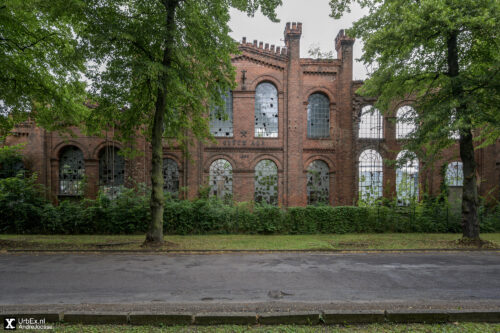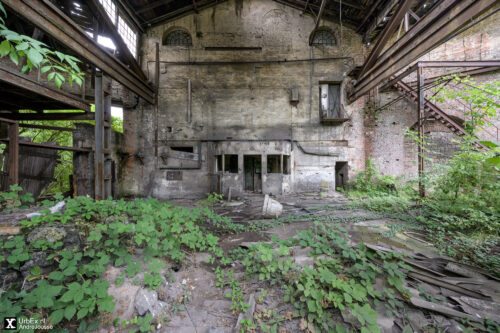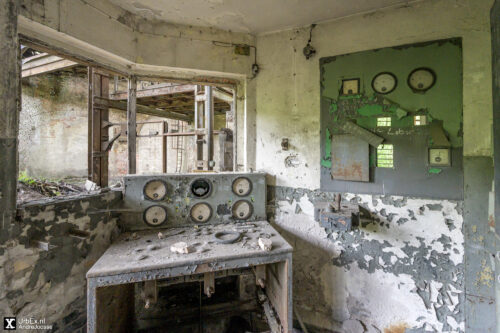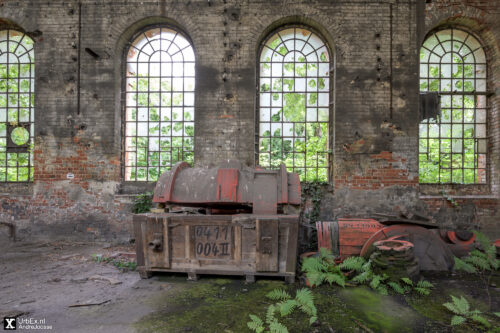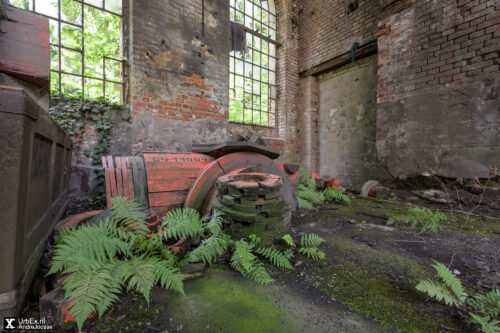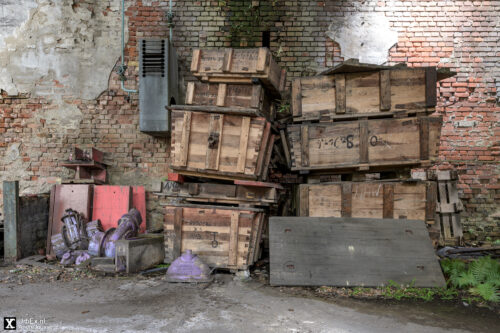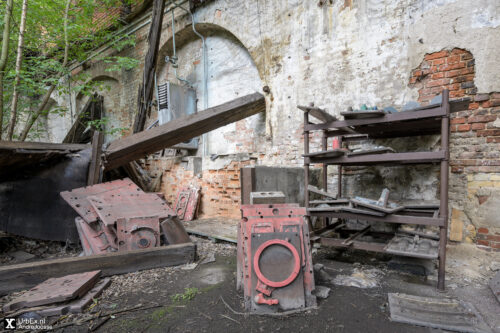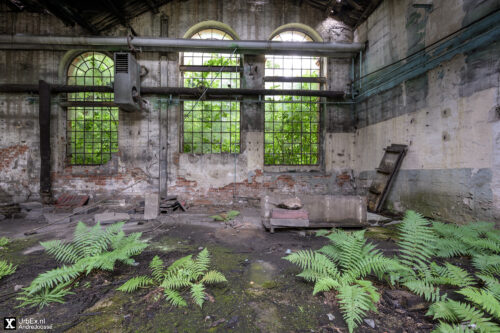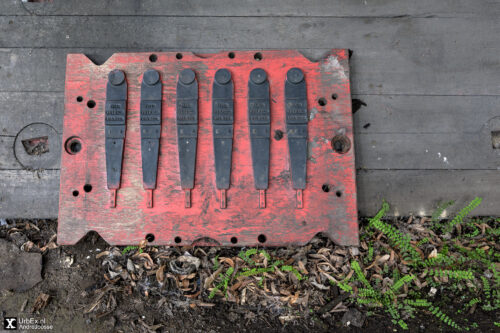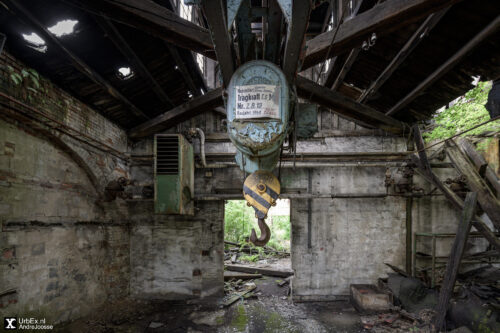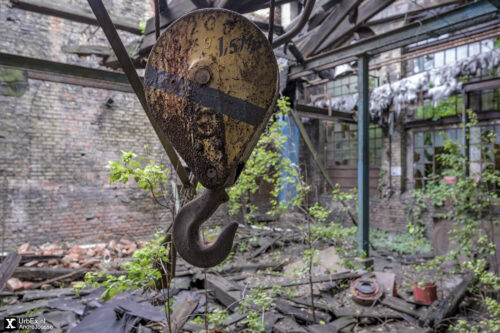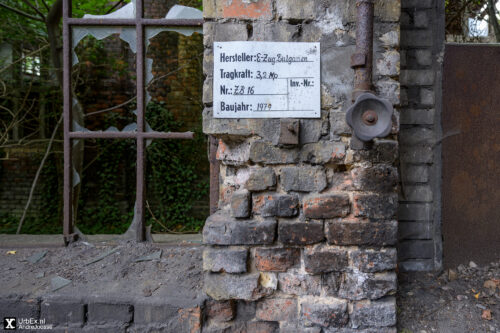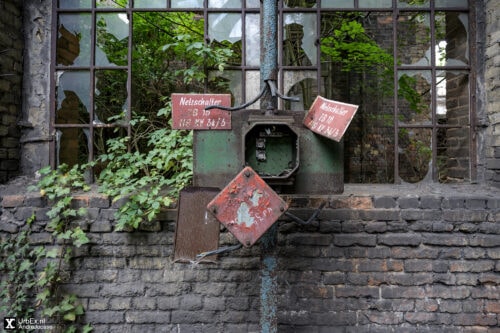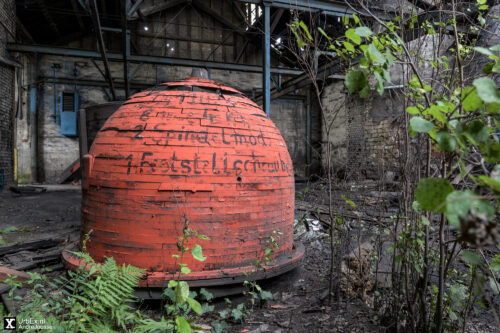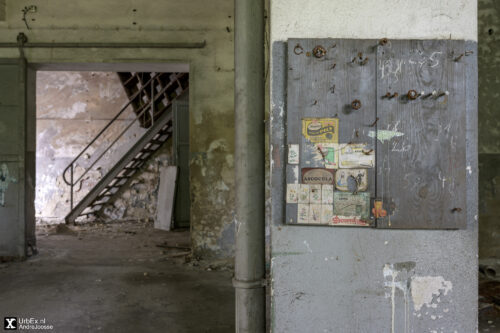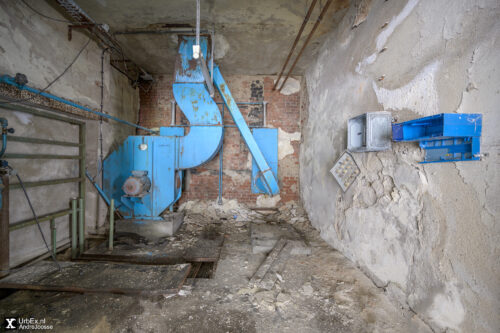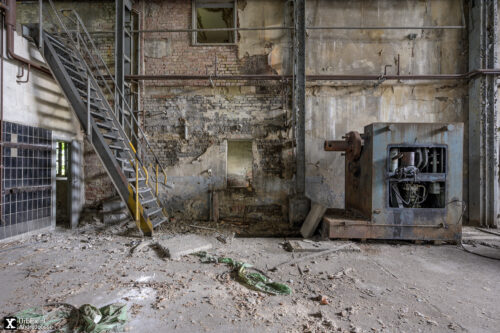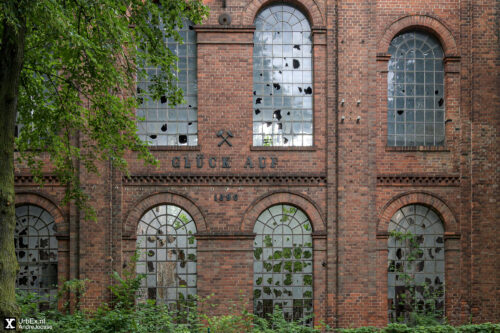Eisenwerk Tangerhütte
Ironworks ‘Eisenwerk Tangerhütte’ built this hall in 1896. It was part of a big industrial site with several foundries. In 1945 the factory became a state-owned company until it was closed down in 1992.
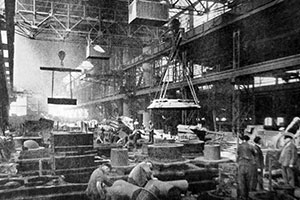
The existence of the town of Tangerhütte owes everything to the ironworks. Originally arising from the village of Vaethen, Tangerhütte saw a significant transformation. In 1842, Vaethen was merely a farming village with a population of 345. However, with the establishment of the plant, it quickly evolved into an economic hub. By the turn of the century, the population of the town surged to 4,436 inhabitants, with the ironworks employing 1,582 individuals. In 1935, Tangerhütte attained city status with a population of 6,000 residents.
Industrialist Friedrich Adolph Kayser initiated the foundation of the ironworks, and it was constructed along the right bank of the Tanger river. In 1842 ‘Kayser et Compagnie’ built an office building, blast furnace, a machine, and boiler house, foundry, carpentry, locksmith’s shop and modelling room.
Eisenhütten und Emailierwerk
In 1851 Johann Jacob Wagenführ and his son Johann Jacob Carl Franz Wagenführ take over the Tangerhütte. The new company achieved world fame as the ‘Eisenhütten und Emailierwerk Tangerhütte Franz Wagenführ’. The company no longer relies on the local iron ore, but they buy pig iron from abroad. Two new factories, including a large foundry, were built on the site between 1889 and 1916.
Their wide range ranges from cookware to all kinds of heavy construction and machine castings among others. At the ‘Exposition Universelle de 1889’ the company impressed with a pavilion made of 441 individual parts. Today it stands in the Gartenträume-Park in Tangerhütte.
VEB Eisenwerk 1 May
During the two world wars, Tangerhütte played a crucial role in supplying the German Army. For instance, it manufactured Howitzer grenades. In July 1945, the Soviets entered Tangerhütte, prompting owner Johann Jacob Robert Franz Wagenführ, the grandson of the founder, to flee the city with the departing Western occupying troops. In 1946, the ironworks underwent a name change to ‘VEB Eisenwerk 1 May Tangerhütte’ and shifted its focus to specialize in pipes for heat exchange and fitting casting as a state-owned company. Following the reunification of Germany, the company underwent privatization once again in the 1990s.
In 1992, the plant was ultimately closed down. Today, the remnants of the former foundry, characterized by its intricately designed brick façade, remain standing. Although significant portions of the plant have been demolished, I personally explored the complex in 2021.
